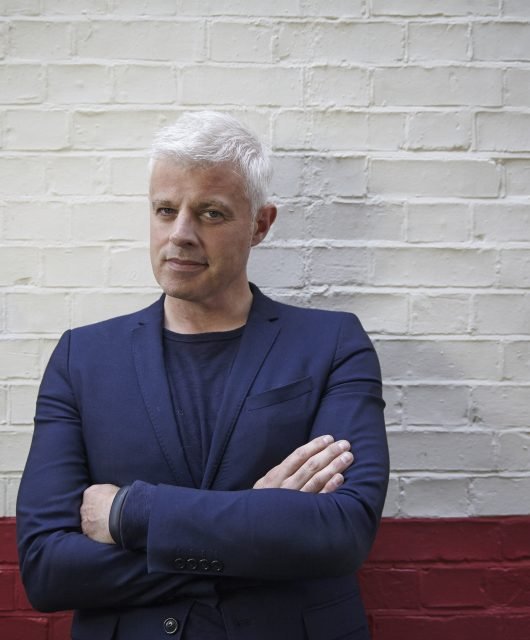Experience, A Maker Or Breaker For Brands: Q&A With Colle McVoy’S John Doyle
The key for effective brand building is creating a positive and memorable brand experience for customers. A brand experience is the ecosystem that exists around a brand, manifested in the sensations, feelings and behavioral responses evoked by a brand.
We’ve exclusively interviewed John Doyle, Executive Director of Brand Experience Design at Colle McVoy, for his take on how an experience can make or break a brand.
BB: There’s a general understanding that brand experience is all about appealing to human emotions to create a connection to drive customer behavior. In your opinion, what is brand experience really all about?
JD: Yes, appealing to human emotions is an important part of designing meaningful and differentiated brand experiences. But just as important and sometimes even more important, especially in those brand contexts that are more functional or useful, is designing experiences that answer to human expectations for a given brand encounter. If you think about it, if your expectations are missed, you’re angry (there’s a saying that “expectations are premeditated resentments”). But, when the experience exceeds our expectations, it can be a magical moment—one that can bond the consumer to the brand and spur positive word of mouth and reviews.

So our mission at Colle McVoy is to identify what humans expect in a given context in order to design delightful and useful brand experiences that exceed expectations and set the bar for all categories. Why “all categories”? Because we humans don’t determine our expectations category-by-category. For example, if we have a bad ordering experience using an in-store kiosk inside a quick serve restaurant, we don’t think to ourselves “this is pretty good for this new way of ordering inside this burger shop.” Rather, it’s more likely that we would think “this stinks compared to Amazon.”
The holy grail of experience design sits at the center of human expectation, emotion and brand purpose, to create an effect along the lines of “this exceeded my expectations and created an emotional impact in a way only this brand could.” And that is a very difficult Venn diagram to pull off.
BB: What makes a brand experience “connect” with consumers?
JD: We believe it’s when the experience exceeds expectations, whether that’s functionally, emotionally or, hopefully, a combination of the two. And if the experience is unique to the brand, that’s the best connection we can design.
BB: Can experience make or break a brand? What does an unpleasant experience cost a brand?
JD: Absolutely, 100%. Unpleasant experiences can cost a brand almost everything, be it abandoned purchase, defection to a competitor, or negative ratings and word-of-mouth. And, while we consumers are generally less likely to share the news of a positive experience, in this age of overload where there are so many options for consumers to choose from, a good review or recommendation can separate a brand from the clutter and boost purchase confidence.
BB: Are brand experiences measurable? Can you mention some of the proven to be successful metrics to measure the impact of a brand experience?
JD: Depending on the experience offered, we can measure its impact using quantitative and qualitative studies—intercepts, surveys and the like—to study consumer sentiment regarding specific experience elements. We can also study the business impact of experience improvements, by looking at factors like uptick in loyalty and increased lifetime value. And Net Promoter Scores can act as a catch-all metric, determining if consumers would recommend a brand to others—a good indicator of a positive overall experience.
BB: One of the crucial touchpoints where consumers experience a brand is the retail brand experience. How can brand marketers design the next big retail experience?
JD: We’re proud to partner with 2019 Retailer of the Year, Target, working to design in-store experiences and store innovations. And right now retail is in such an exciting mode of reinvention, which is only accelerating due, in part, to the challenges of the Covid-19 pandemic. What we’re seeing now is that the “next big thing” may actually be a series of small breakthroughs in experience—hacks that answer to new and emerging consumer expectations and needs for safety and convenience. In many ways, retail is bringing the experiences born of shopping online to the physical world and blurring channels to surround the shopper wherever they go.
BB: If you’re to rank global brands according to experience, what would be your top 3 picks?
JD: I would list many of the expected players, like Apple, Airbnb, Nike, Amazon. But I am constantly impressed by Domino’s Pizza. They’re an excellent example of a brand that thrives at the center of human expectation, emotion and brand purpose. They also recognize that what is a delightful experience today is an expectation tomorrow. If there is a new way to order pizza—a new channel, like voice or in-auto—Domino’s is consistently there before other brands. The cumulative effect of these inventive experiences adds up to make the Domino’s brand feel modern, fast and centered on human expectations. It’s a great litmus test for our clients to ask, “is the experience we’re offering better than Domino’s?” And if the answer is “no” then we know we need to get to work.





